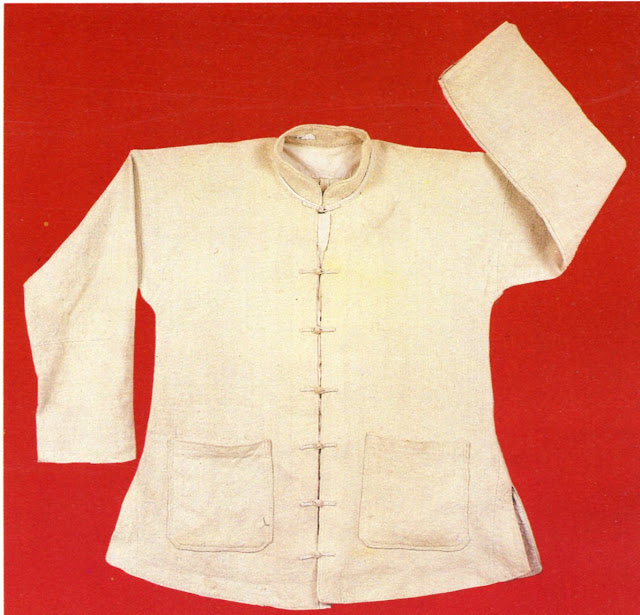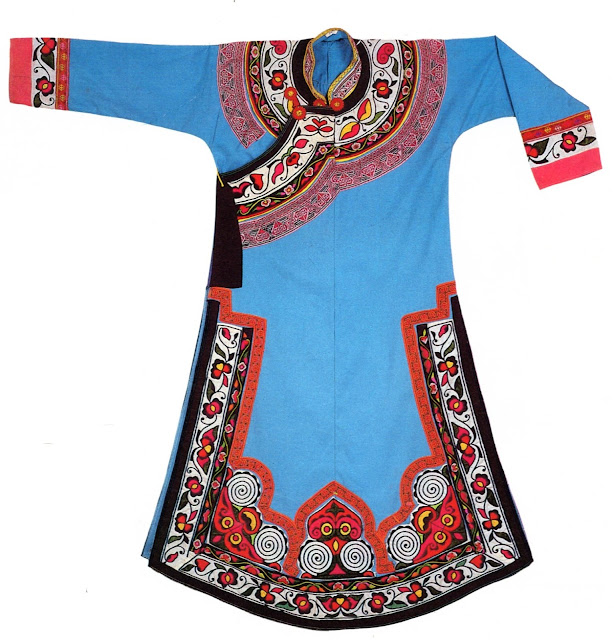Hello all,
Today I will continue my coverage of the costumes of the various Yi peoples.
Nasu or Eastern Yi
These people live in the northeast of Yunnan province, southeastern Sichuan, and western Guizhou. I am following the official groups recognized by the Chinese government. The groups which arise from linguistic analysis are much more complicated. Be aware that they do not always coincide, as the Chinese also take cultural characteristics into account. https://en.wikipedia.org/wiki/Nasu_people
This group is also called the Wumeng Mountain Yi. There are roughly 900,000 of these people. The image above shows the Nasu taking part in a parade in somewhat modernized costumes.
The Nasu, like all the various Yi groups are well known for the ornamentation on their clothing, especially cross stitch and applique.
Bed valences are commonly ornamented.
Weining
This style is worn in a rather large area in the northern part of this region. Here is a map which shows roughly the area in which this is found.
Young and middle aged men in the past wore wide legged trousers as the Nuosu do.
Both short jackets and long robes are worn by men today, usually with a black turban wrapped around a topknot. Here is a boy's outfit. note the vest with many pockets which is typical of everyday and work clothing.
Here is a work garment for adults.
Wool jackets and capes are part of the clothing tradition here as well.
Ornamented shoulder bags and sandals are worn for festive attire.
In the time of the Qing dynasty, some items of clothing were borrowed from the Han or the Manchu, like this man's vest in Manchu style.
Women in the Weining region wear pants and over them long gowns, an apron and black turbans.
The gown has a round design around the shoulders which extends to the right opening. here is an example shown with an apron.
The ornament also extends on the sides and hem of the gown. This example shows three tiger heads on the hem with the typical spiral designs of the Yi, the black representing Mother Earth, and the white Father Sky.
This gown is from Nayong county.
Here are a couple of more ornate aprons.
For festive occasions the pants and the shoes may also be embroidered.
Here is a bride from the Guizhou portion of this area [Bijie]. Note the capelike collar with pendants in the shape of the Lingzhi fungus, which may be a borrowing from the Han.
The turban is covered with a long headdress which is traditionally cross stitched.
For parts of the ceremony a veil with tiger designs is worn over the head.
Here is an image of a girl from Bijie. All of the various peoples in this whole area make fantastic caps for their children as protection.
A few more images of this costume.
These embroidered bands are wrapped around the headdress.
Panlong
This costume style is found to the south of the Weining. Specifically from the southern part of Panxian county in Guizhou to Longlin County in Guangxi. Here is a rough map.
This style is rather simple, with some similarity to the Majie and Weining styles. The men wore plain pants and robe, like this example from Longlin.
The women wear pants, long gown and black apron, like these examples from Panxian County.
These groups are from Qinglong county, just east of Panxian.
Previously skirts were worn with this outfit as we see in these examples from Longlin. This type of skirt was also worn by the Han, especially in the south of China.
Here is a baby carrier from this region.
Thank you for reading, I hope that you have found this to be interesting and informative.
Roman K
email: rkozakand@aol.com


















































No comments:
Post a Comment